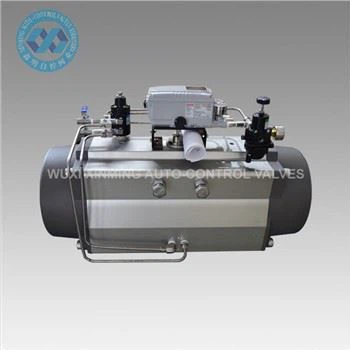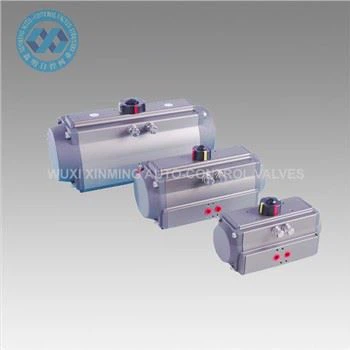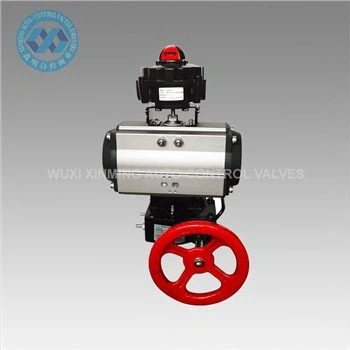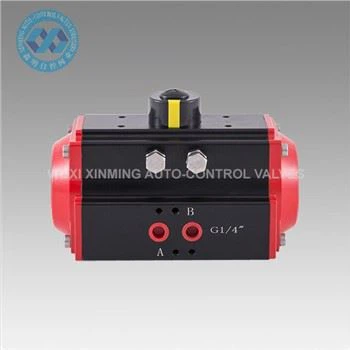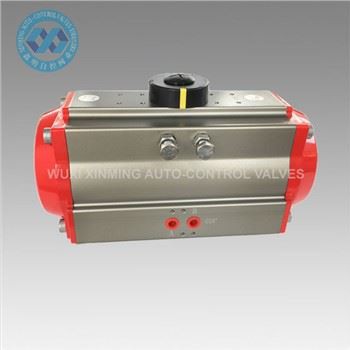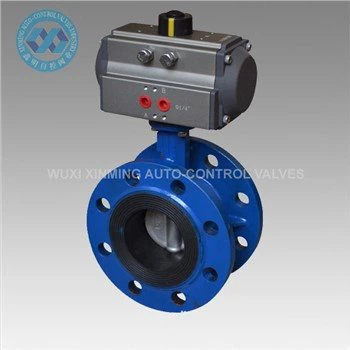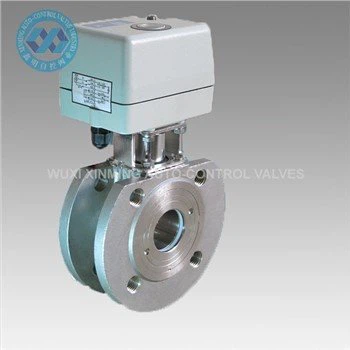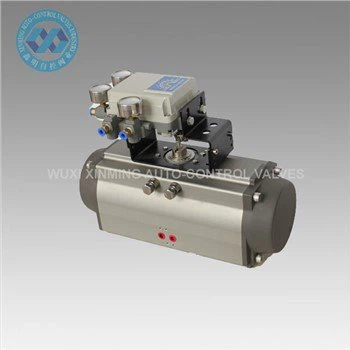Introduction
Pneumatic rotary valve actuators are critical components in industrial process control systems, designed to automate the operation of quarter-turn valves (e.g., ball, butterfly, or plug valves). These actuators convert compressed air energy into precise rotational motion, enabling reliable valve positioning for flow regulation, isolation, or safety shut-offs. Renowned for their robustness, rapid response, and suitability in hazardous environments, pneumatic rotary actuators are indispensable in industries such as oil and gas, chemical processing, and water treatment. This article examines their design principles, operational benefits, and key considerations for deployment.
Working Principle
Pneumatic rotary valve actuators operate by translating linear piston motion into rotational force. Common designs include:
- Rack-and-Pinion: A linear piston drives a rack gear, which engages with a pinion gear to produce rotation.
- Scotch Yoke: A sliding yoke mechanism converts linear piston movement into torque via a crank arm.
- Vane-Type: Pressurized air acts on a rotating vane inside a cylindrical chamber, generating direct rotary motion.
When air pressure is applied to the actuator’s inlet port, it drives a piston or vane, creating torque to rotate the valve shaft. The direction of rotation (90° or 180°) is controlled by alternating air supply to opposing chambers. Spring-return or double-acting configurations ensure fail-safe operation or bidirectional control.
Design Features
- Torque Output: Engineered to deliver precise torque levels (e.g., 10–10,000 Nm) for valve sizing and system pressure requirements.
- Compact and Lightweight: Aluminum or stainless steel housings minimize footprint while maintaining durability.
- Corrosion Resistance: Materials such as anodized aluminum or epoxy-coated steel protect against harsh chemicals, moisture, or marine environments.
- Position Feedback: Integrated sensors or limit switches provide real-time valve position data for automation systems.
- Fail-Safe Modes: Spring-return actuators reset valves to a predefined “safe” position during air supply failure.
Advantages Over Other Actuator Types
- High Speed: Achieve 90° rotation in <1 second, ideal for emergency shut-off applications.
- Intrinsic Safety: Air-powered operation eliminates explosion risks in flammable atmospheres (ATEX/IECEx certified models available).
- Minimal Maintenance: No electrical components reduce wear and simplify upkeep.
- Cost Efficiency: Lower initial investment and energy consumption compared to electric or hydraulic actuators.
Key Industrial Applications
- Oil and Gas: Control flow in pipelines, tank farms, and refining processes with ISO 5211-compliant actuators.
- Chemical Processing: Automate corrosive fluid handling in reactors, mixers, and dosing systems.
- Water/Wastewater: Manage treatment plant valves for sludge control, filtration, and pump regulation.
- Power Generation: Isolate steam, coolant, or fuel lines in turbines and boilers.
- Pharmaceuticals: Ensure sterile process control with hygienic, washdown-ready actuators.
Selection Guidelines
- Valve Compatibility: Match actuator mounting interface (ISO 5211 standard) and torque output to valve specifications.
- Operating Pressure: Standard actuators function at 4–7 bar (60–100 psi); high-pressure variants support 10+ bar.
- Environmental Factors: Consider temperature range (-40°C to 150°C), IP ratings (e.g., IP65/67), and chemical exposure.
- Control Requirements: Choose between double-acting (bidirectional) or spring-return (fail-safe) models.
- Cycle Life: Industrial-grade actuators typically endure 1–5 million cycles under rated conditions.
Installation and Maintenance
- Air Supply Quality: Use filters and dryers to prevent moisture or particulate contamination.
- Lubrication: Apply pneumatic tool oil or grease to seals and gears per manufacturer guidelines.
- Testing: Perform periodic torque verification and leak checks to ensure operational integrity.
Emerging Trends
- Smart Actuators: IoT-enabled devices with predictive maintenance capabilities via embedded pressure/torque sensors.
- Energy Efficiency: Low-friction seals and optimized air consumption reduce operational costs.
- Hybrid Systems: Integration with electric actuators for backup control or precision tuning.
Conclusion
Pneumatic rotary valve actuators offer unmatched reliability and performance in demanding industrial environments. Their ability to combine rapid actuation, explosion-proof operation, and low lifecycle costs ensures their continued dominance in valve automation. As industries embrace digitalization and sustainability, advancements in smart pneumatics and energy-efficient designs will further enhance their role in modern process control systems.
If you want to learn more about low-priced products, please visit the following website: www.xm-valveactuator.com


